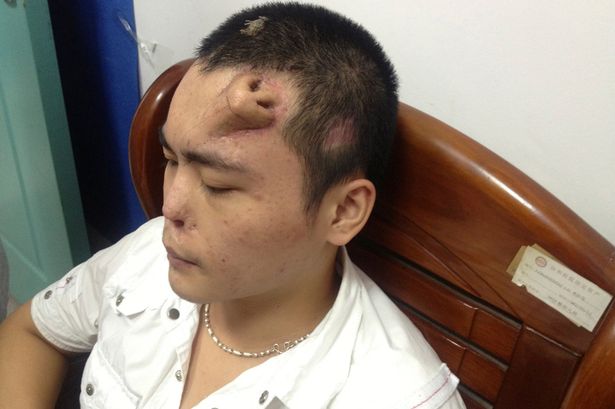Monte Morin
LA Times
September 26, 2013
Images of an expertly sculpted nose on a Chinese man’s forehead may be shocking to many, but plastic surgeons say the use of forehead tissue for nasal reconstructive surgery dates back thousands of years.
The practice of using flaps of tissue from both the forehead and cheek to reconstruct a severed nose was begun in ancient India, where facial disfigurement served as a form of punishment, according to Dr. Robert X. Murphy, president elect of the American Society of Plastic Surgeons.
“They were very far advanced in using the forehead skin to refashion a semblance of a nose,” Murphy said.
The Sushruta Samhita, a Sanskrit text, described the surgical tools, herbs and techniques necessary for nasal reconstructive surgery, and offered this bit of advice to practitioners: “Operation without trembling, fear, or doubt are always praiseworthy of the surgeon operating.”
The text is attributed to Sushruta, a physician who is believed to have lived about 600 BC.
In a paper on the historical impact of these Indian methods, lead author Dr. Larry Nichter, a plastic surgeon in Newport Beach, wrote that the basic techniques laid the foundation for modern plastic surgery.
The story and photos of the Chinese forehead nose has drawn gasps from many in the general public, particularly Westerners.
In the United States, plastic surgeons perform such reconstructive surgery in a single session. Cartilage taken from a patient’s rib and ear is used to build a foundation for the replacement nose. Next, a flap of skin cut from the forehead is folded down and over the cartilage to create a new nose.
In the China procedure, however, the plastic surgeon used a different method.
The surgeon used tissue expanders placed beneath forehead skin to stretch the flesh and create a “pocket” of skin. Next, the surgeon placed rib cartilage beneath the stretched flesh to shape a new nose that would later be “harvested” and placed in the position of the patient’s old nose, which was damaged in an auto accident.
The process probably took a period of weeks, and the actual replacement surgery has yet to occur.

